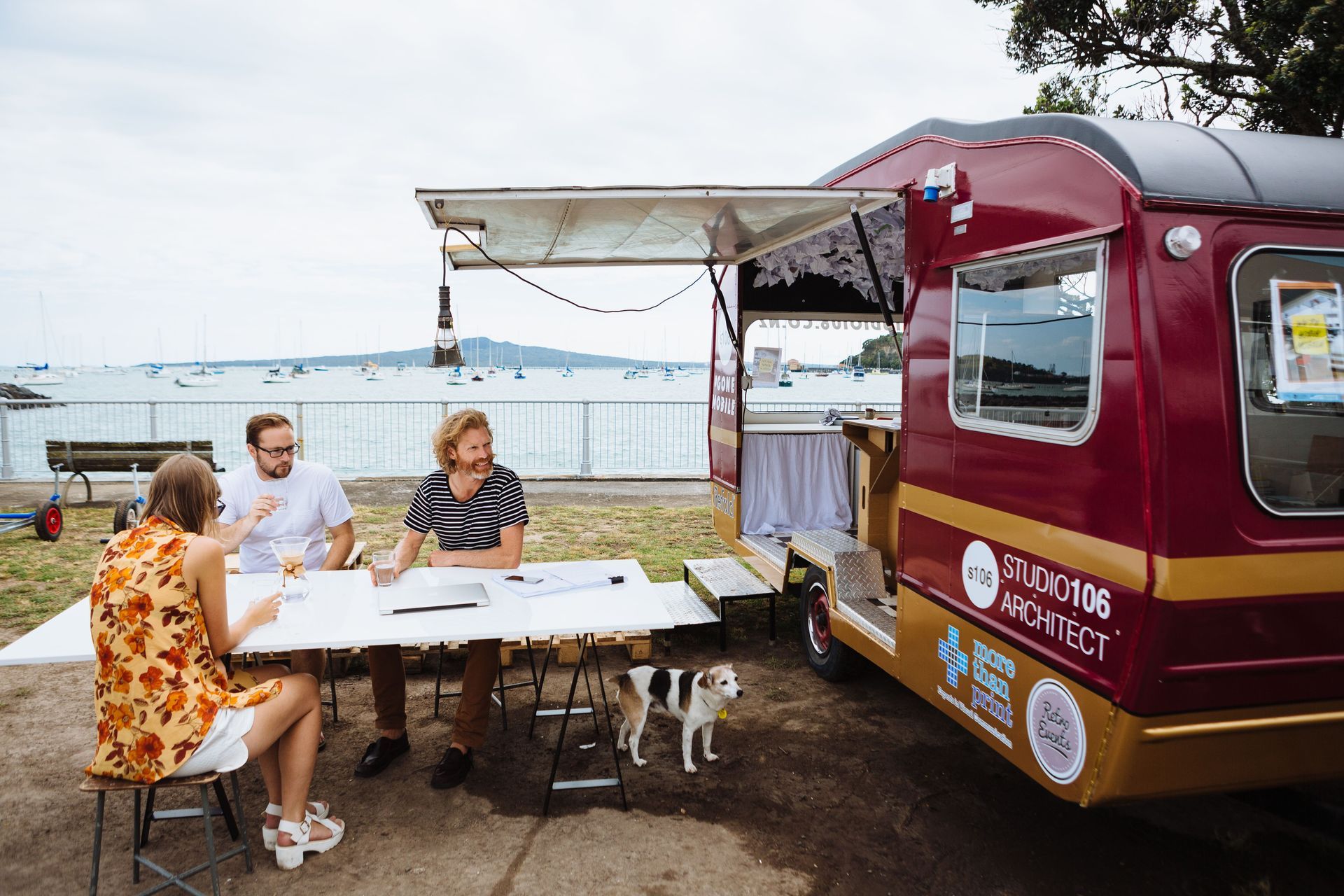#GoneMobile - The Art of Small

From Auckland to Melbourne and beyond, it seems people are trying to come to terms with the rapid growth and density of our cities. The strategy to increase density, as a way to improve the liveability and functioning of our city, causes us all to reflect on the quality of life we are accustomed to, and what we might wish for in the future. In our minds, this means thinking about the amount of space we have, how we use it, and the way people seek to interact in it.
At 106 Architects, we have long been exploring the efficiency of space movement, both in the way we might work, and the way we collaborate with our clients. For example, all of our studios, Auckland, Melbourne, Wanaka are set within shared spaces. Sure, we have done this to optimise financial resources and our use of space. But more so, because we feel that the dynamic and dense arrangement of skills and expertise leads to better client outcomes. Why? Because the conversation in these spaces becomes fluid, we get smarter from the shared dialogue. Moreover, we're more actively connected to the communities in which we work. This ultimately equals better designs for everyone we touch.
Our commitment to this space movement exploration was best illustrated during the Summer of 2016 when we set out to discover the impact a reduction of space might have on our business and the way we work. Hence the #GoneMobile experiment was born.
The #GoneMobile Experiment
106 Architects created a temporary office on the site of one of our projects – the Hyundai Marine Sports Centre in Okahu Bay, Auckland. The space, a 9 m2 caravan, was of a magnitude smaller than our 90 m2 studio. During our time in the 9m2 mobile office, we observed that the space changed in response to our needs. It happened in such a fluid way that it often flew under the radar. We moved from "documentation mode" to "meeting mode" all within the same small space, and with little disturbance to the way we worked. This eliminated the need for several adjoining spaces with fixed (constructed) purposes. Spatial boundaries become reduced or even blurred, making smaller spaces smarter by design.
The other advantage of working in a small office space by the sea was that it was easy to manage, and it was flexible, even nimble. By being on the site and near our client-community, it opened up powerful conversations, while revealing extraordinary insights into how people engage with and benefit from the space and its surrounds.
The 106 team found the move into our much loved harbour-side caravan office came with increased free-flow of ideas that surged back and forth with ease. Although we were experimenting with our business space, we knew the real opportunity was how we could apply these learnings to our future Living, Sports and Community designs.
How smaller spaces lead to better connections
Before the experiment, we knew that we would come away with some great ideas on how to introduce smart design into homes – how spaces can respond to changing needs for volume, size or purpose; otherwise known as smart spaces. Smart spaces are often expressed through the utilisation of sliding partitions to control volume or changing traditional geometry to create more versatile spaces. Of course, after #GoneMobile we came away with some ideas on how to better use kitchens as a family social hub, but perhaps the more profound learnings from the experiment related to how small spaces can help effectively breakdown social disconnection.
Small Spaces in the Digital Age
We live in an age where technology is infiltrating family and community life, resulting in 'disconnection' in a strangely connected world. This has been topical in the media for some time and is explored in Catherine Steiner-Adairs book, The Big Disconnect: Protecting Childhood and Family Relationships in the Digital Age, Some of the themes touched on in the book mirror our findings from the experiment. For example, good spatial planning can provide a setting for users to be present and together and smaller spaces by their very nature result in this happening. As such, when we collaborate with our living clients, we are now asking the question "What do you value when it comes to your family dynamics? Are the spaces in your home helping to facilitate and support these? Can we create spaces where digital use and social engagement can live together harmoniously?
Smaller spaces lend themselves to that 'Third Place'
Perhaps most importantly, the learnings from the #GoneMobile experiment have also extended into our sporting designs. We often consider how small, smart spaces can create more dynamic and enhanced community intersections. They lend themselves to the trend that we are highly vested in and extremely passionate about - designing community facilities so that they can become that "Third Place." That social place between work and home where we feel safe accepted and part of a family. This is often best achieved within a small intimate setting rather than in large impersonal spaces.
Creating these “Third Places” is something that we want to be known for and something which 106 Architects hopes to integrate into all our community designs in the future.

